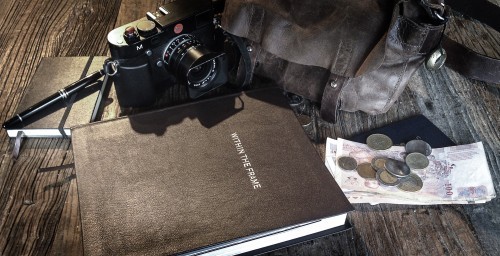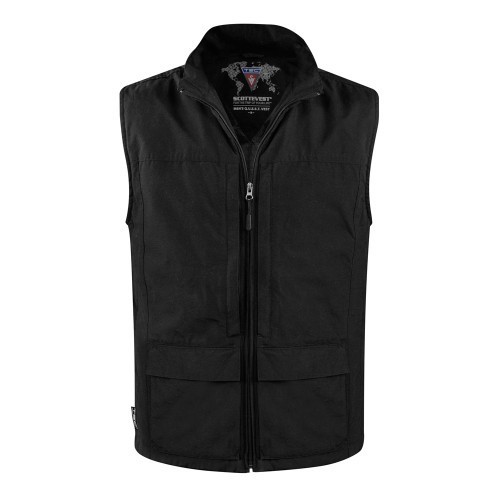David duChemin's Blog, page 25
June 23, 2014
SHOOT THE LOOK
If you want to really learn your craft, it’s more than buttons and dials. You need to be able to take all the technical stuff you’ve got under your belt and apply it to create particular moods and aesthetics. You’d be hard pressed to find a commercial photographer with more credibility, experience, and the desire to teach this, than Dave Delnea. This spring we worked on a new series with Dave called Shoot The Look and today we’re releasing Volume 01.
Shoot The Look, Volume 01, is a 5-episode live action video series that unpacks the in-and-outs of 5 popular commercial looks. In the process of talking about – and showing – every consideration that goes into each shoot – from gear and technique, to the final moments in post-production, Dave walks you through it in his accessible, easy-going manner. Each video can be streamed or downloaded, and runs between 15 and 20 minutes (almost an hour and a half of teaching) and will give you all you need to tackle these aesthetics, and adapt them to your own style. These videos are much more than recipes for one look or another, however. The hope was to teach transferable techniques that give you tools to learn this craft and put your own stamp on the images you make, and Delnea and our production team really delivered.
That’s the marketing copy. For more, check out the trailer video (above) for a sense of it. Off the record, this stuff is fantastic. I know, I publish this stuff, and I’m meant to say that. But I wouldn’t promote it if I weren’t so sure of its value to you. I watched the first one in the very early cuts and added several new tools to my repertoire, particularly the post-production stuff Dave does in Lightroom. I had a lot of Aha! moments, and I’ve been doing this a while. Dave hasn’t held back and that’s part of what I love about him; like me, he doesn’t have much respect for the idea of secrets, and it shows in his teaching. Learn one or two techniques from this and it’ll be worth it, but you’ll learn a lot more than that.
Shoot the Look is priced to get it into as many hands as possible (virtually speaking, of course). Regularly priced at $40, you can get it for the next week, until June 30 (11:59pm PST), for only $30.
June 18, 2014
Study the Masters: Vivian Maier
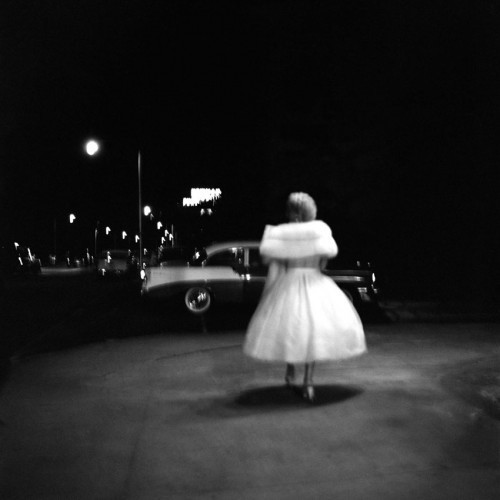
Unless you’ve been hiding in a cabin in the woods, there’s a better than none chance that you’ve heard about Vivian Maier (1926-2009), the reclusive nanny who lived and worked – and photographed – in Chicago for most of her adult life. Her work never saw the light of day until discovered serendipitously by a collector, John Maloof, when he bought some 100,000 of her images, many of them still undeveloped, at an auction. Since then word of Maier’s odd life has circulated almost as quickly as word of her beautiful work, which in her lifetime not only avoided fame, but avoided being seen at all.
I include Maier here in the Study the Masters series for a couple reasons. The first being the quality of her work, which is stunning, and completely lacking in pretense, which is a refreshing side-effect of creating art only for ourselves. Being discovered post-humously doesn’t detract from her well-deserved status as a master of this medium. The second reason is related, and falls close to my usual sermons about the near-complete irrelevance of the dividing line between professional and amateur when it comes to creating our work. Maier used a twin-lens reflex camera for most of her work, a boxy thing with an average lens, worked as a nanny, and never showed her work. She did it for her own reasons. She was not a “professional.” And despite all this -perhaps because of it – she created an astonishing, authentic, beautiful body of work. We should all be so lucky.
You can read more about Maier on Wikipedia, or see more of her work at VivianMaier.com but to best appreciate it, consider getting your hands on either Vivian Maier: Street Photographer or Vivian Maier: A Photographer Found (pre-order only. Due out Oct.2014)
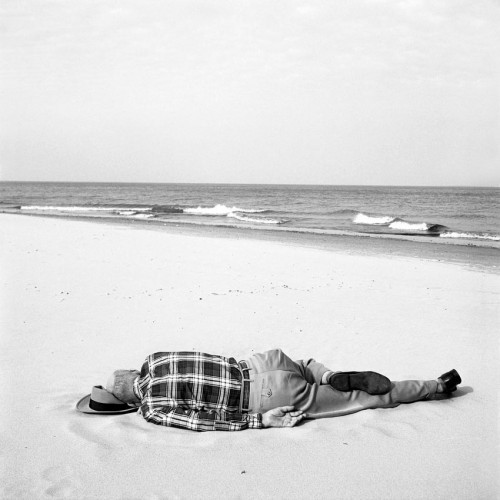
June 16, 2014
The Artist’s Journey

One of the great revelations of my life came when I discovered Joseph Campbell and his book, The Hero With a Thousand Faces. I read it while studying films and screenplays and trying to understand what makes a great story. And I read it while divorcing for the first time and not sure I was going to survive the trauma of that.
While challenging to read, I found one idea that stuck with me and resonated so completely that it’s still a rare month that I haven’t gone back to it, to sift through the paradigm and find meaning. That idea is the Hero’s Journey—the idea that in the mythology of every culture through time there are common elements in the stories that give our lives meaning. Books like The Writer’s Journey, by Christopher Vogler, and Story, by Robert McKee, both explore this idea in order to help writers create stories that are more powerfully resonant. I think we can use the idea to see the creative process from a new perspective, and to write our own story in more intentional ways, and with greater understanding.
The Hero’s Journey is not a formula, and it’s not prescriptive. It’s descriptive. It looks into the stories we’ve told each other since the dawn of time and asks why they have such a ring of truth, and what elements they have in common. The hero takes many forms, and is not gender specific. She can be a warrior, to be sure, but as often can be an explorer, an inventor, a mother, a tradesman, or an artist. What he or she is is not important; the Hero’s Journey is more concerned about the path the hero takes.
Borrowing from the language of Vogler’s The Writer’s Journey (because he makes the often difficult language of Campbell much more accessible), the hero’s journey begins in the Ordinary World. It is the place in which we live our ordinary lives, waking daily to our ordinary tasks, and from which the hero is about to be shaken by the Call to Adventure (which I’m capitalizing to make it a little easier to see the structure). That call comes in a million ways, but is almost always an awakening, a desire, a longing, or a crazy idea. For me it’s often expressed as a What if….? However it comes, it’s a call away from the mundane: a call to rock a boat; to change a status that’s been quo for too long; a call to make—to create—a change.
If you’re like me or like most others (including the protagonists in millennia of stories), you’re likely to refuse the call at first. The Refusal of the Call is common, and though there are times it’s taken up quickly and without thought, it’s the human tendency to prefer the familiar and the safe over the unknown. And so we turn our attention elsewhere; we make excuses; we procrastinate. Even when the call itself seems so right and fills a longing, it’s our nature to count to three a few times to build the bravado needed to jump into water we know will be cold and dark. Once we own that call, once we accept and dive in, pack our bags, sit down at the typewriter, or get out a new canvas, the journey truly begins. Acceptance of the call is, in most movies, where the action begins and the protagonist crosses the First Threshold into the special world of the adventure, the new world in which the story unfolds and after which nothing will be the same. Dorothy steps onto the Yellow Brick Road, Luke joins the Rebel forces, and Peter Parker puts on the Spider-Man costume for the first time. Here the hero meets allies and enemies, encounters tests and trials, and begins his approach to the Inmost Cave.
The Inmost Cave is where the hero endures the ordeal that is central to the story, the conflict around which the story revolves. Without conflict there is no story. There is no catalyst to change, and no reason for us to keep reading. Who wants to read a story in which there is no conflict? No one. Because life is not like that. We seldom get what we want without struggle and loss. We do not become who we want to become—the best versions of ourselves—without passing through the fire. We do not write the book without tearing up a few pages, nor paint the masterpiece without ruining a few canvases. We know that. It’s why the truly epic stories have so endured; we know the best stories, the ones that most resonate with our humanity and fuel our hopes, are the ones that remind us that the harder the struggle, the greater the reward. And it’s no token struggle, either. The losses we accumulate on the way can be almost catastrophic, and there are times we’re not sure the hero will make it. We don’t know the book will get finished, yet alone feel right when it does. We don’t know our marriage will make it, our business won’t go under, or that the year we spent chasing the thing we long for will pay off.
And it doesn’t always. Sometimes the hero just doesn’t make it, and the story never gets told. You know that. I know that. What doesn’t kill us gives us something to tell stories about. But when she does make it, and she takes hold of the Reward for which she struggled so hard, and takes the Road Back to the ordinary world, even still pursued by the villain, the enemy of our souls, or her own doubts, she experiences something of a rebirth, a Resurrection. She is changed, has faced her fears, her demons, and she has won, Returning Home, back to the tribe, the kingdom, the family, with the magic sword or elixir.
The dragons have only ever been metaphors for us, the swords now only symbols, but this pattern in one form or another has played out in a million eras on a million faces. And I think it’s worth the time to write here and to think about, because I think it makes it easier when we wake up hearing that call to do something new, to venture past the threshold of the mundane (even if that’s an everyday effort) to remember what’s coming our way. It’s easier to deal with the approach to our inmost cave, or deepest fears, when we can brace ourselves for it, and when we know that every artist through every age, whether their art was in raising monuments, raising money, or raising kids, has fought tooth and nail to get there, and that struggle has changed them before it’s allowed them to go home and do it all again the next day.
Our own hero’s journey, just as easily seen as the Artist’s Journey or the Human’s Journey, will both span our lives, and repeat in smaller cycles, with each new book, each song we try to write, each canvas we fill, or each new initiative we begin when the words “what if…” wake us from our slumber and call us to the adventure. We will go through the same challenges, whether our conflict is with ourselves, the project we’re working on, or something else. It won’t make the struggle easier, but perhaps we’ll have less fear, and blame ourselves less, when we know we’re fighting on the same battleground. And it should make us nervous and raise red flags when the journey doesn’t take us through those battlefields. If we haven’t struggled with it, we will—or there’s a good chance the work isn’t worth the effort. I’m not saying it’s always this way, I’m just saying that’s the way it seems to be most of the time. Our art is only worth as much as it cost us.
Living a great story is much harder than watching a great story, but it’s why we watch at all. The great movies steel our nerves and give us hope. They remind us that no story worth the telling, or the living, comes without conflict and struggle; they remind us that the necessary price we pay is transformation. The promise of any great story is that the hero never returns the same. Story is not about entertainment, it’s about change, and it is change that makes us the artists—the humans—that we are and gives us the place from which we make our art and write our own stories; to live our lives with greater intention instead of allowing our stories merely to write themselves.
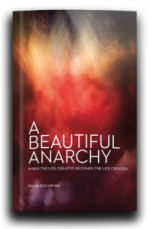 The Artist’s Journey is an excerpt from my latest book, A Beautiful Anarchy: When the Life Creative Becomes the Life Created. You can get a copy of that as a paperback (with an included PDF), as a PDF only, or as a Kindle version. You can read, or leave, reviews on the Beautiful Anarchy Blog.
The Artist’s Journey is an excerpt from my latest book, A Beautiful Anarchy: When the Life Creative Becomes the Life Created. You can get a copy of that as a paperback (with an included PDF), as a PDF only, or as a Kindle version. You can read, or leave, reviews on the Beautiful Anarchy Blog.
“A Beautiful Anarchy is manifesto that has changed how I see the world. Read this book if you want to make more meaningful photographs and live a more complete life.”
~ Chris Orwig, author of Visual Poetry.
June 8, 2014
Study the Masters: Dorothea Lange

Dorothea Lange (1895-1965) was an American photographer best known for her photojournalism in the Great Depression, and notably known for the image above, Migrant Mother. An early documentary photographer, Lange’s work in the depression was done primarily on behalf of the American Farm Security Administration (FSA). Later covering the forced relocation of Japanese Americans, in post-Pearl Harbour America to internment camps, Lange’s work was unflinching in it’s coverage, so unflinching and critical, in fact, that the images were impounded by the Army.
Lange went on to co-found Aperture magazine. She died in 1965 after long-battled health issues and finally succumbing to cancer.
A simple Google image search will make you immediately familiar with her best-loved work, which I’ve always found gritty and human and a little confrontational in the best possible way. Lange contracted polio when she was a young girl, and always walked with a limp. She came through a lot, and I have as much respect for her tenacity as I do for her photography. There is an excellent biography of Lange’s life here: Dorothea Lange: A Life Beyond Limits, by Linda Gordon.
If you want to see more of Lange’s work you might want to check out these: Dorothea Lange, by Mark Durden (Phaidon), and Daring to Look: Dorothea Lange’s Photographs and Reports from the Field, by Anne Whinston Spirn.
June 7, 2014
QUEST Vest Giveaway Winners

This is a younger me in my much-loved SCOTTeVEST. So dashing. So multi-pocketed. So pretending to be somewhere exotic.
Today we’re giving away three of the new QUEST vests to a few lucky winners. Those lucky winners will get an email from my team and we’ll get your information, and Scott Jordan’s team at SCOTTeVEST will send them to you, you lucky well-dressed, multi-pocketed travellers, you. Congratulations to Todd Mayson, Adam Schellenberg, and Marion Woodman. And many thanks to Scott and his team for making great products and being so generous with them.
For those of you who did not win, but would like your own QUEST, you can get one direct from SCOTTeVEST. There’s a Father’s Day sale on now, though the QUEST isn’t included in the sale, you might find something else you like for a great deal. That sale ends June 12, I think.
Have a great weekend, wherever you are!
June 6, 2014
Study the Masters: W. Eugene Smith
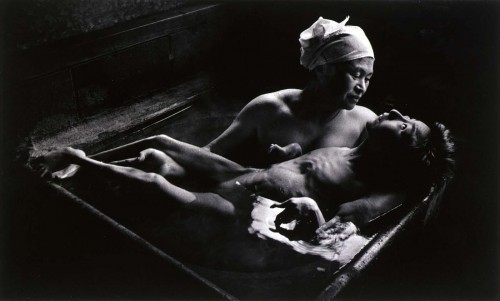
W. Eugene Smith (1918-1978) was an American photojournalist with an uncanny sense of timing and humanity. Often credited as the father of the photo-essay, Smith began his career making photographs for papers in Wichita, Kansas, before eventually moving on to Newsweek, then Life, which he eventually left over an argument about how they used his images of Albert Schweitzer, after which he joined Magnum. Smith had a reputation for being uncompromising in his principles and work, which no doubt make him tough to work with, but adds to the reasons he remains so celebrated for this work. Smith is probably most well known for his WWII work, but his photographs from home are no less captivating. There’s a darkness to his work that I find especially compelling and human.
If you have an interest in visual storytelling you couldn’t do much better than spending some time with W. Eugene Smith’s work. Books like Let Truth be the Prejudice, The Jazz Loft Project, or W. Eugene Smith, Master of the Photographic Essay, would be excellent introductions to his work. Among my favourites are the dressing room candid of Charlie Chaplin, below, and the image above, Tomoko Uemura in her Bath, Minamata, Japan.
June 1, 2014
A Beautiful Anarchy

Colour outside the lines and make the best art of your life!
To my core I believe that our lives can be lived boldly, intentionally, and as our truest work of art. I believe we are all capable of living extraordinary lives; that people like Gandhi, Picasso, or Mother Teresa, were ordinary people who chose to be fully themselves and play by their own rules. I believe that we are all creative and that if our lives are our first, and most intentional, act of creation, then the principles of creativity can teach us to be not only bolder creatives but bolder human beings.
A Beautiful Anarchy is a book about living life creatively and on our terms, free to be fully ourselves. Whether you make a photograph, a book, a family, or a business – it’s about making that creation, and our lives, something that is beautiful, authentic, and wildly human.
A side project that’s become more and more an obsession, this is my most personal book. In all it’s taken me longer to write than any of my other books, and it’s the first one I’ve written that doesn’t contain a single photograph; it’s not about my art, it’s about yours.
“Every once in a while a book comes along that isn’t just informative and interesting but actually opens up possibility where before there was none. A Beautiful Anarchy is that book. This candid manifesto for the creative goes beyond philosophy and invites the reader to reconsider how they relate with what they fear and to systematically reinvent that relationship in order to create a remarkable life. Highly recommended.”
~ Dane Sanders, Converge Podcast.
It’s hard for me to write this post because nothing I type sounds right; it all sounds like marketing copy and I don’t mean it that way. This is a book about being human. I wrote this book because after all my teaching about how our photography will be some much stronger and more authentic when we do it intentionally and with vision, I realized (and many of you told me) I was really talking about life. I wrote it because I hoped it would be the right book at the right time for the right people and that for those people it would be life-changing. With that hope, A Beautiful Anarchy is available today. I’ve also been working hard on a new website and blog to support this new focus – you can find that at aBeautifulAnarchy.com starting today as well. There you’ll find reviews of the book, articles, desktop wallpapers, quotes, interviews, and other resources for anyone wanting to live intentionally and creatively.
“A Beautiful Anarchy is more than a book. It’s a call to be truly alive! The powerful stories and principles shared will teach you how to create personal freedom, make your mark and live with passion. Read this book and do something brilliant with your life!”
~ Richie Norton, author of The Power of Starting Something Stupid
A Beautiful Anarchy is available in several formats. First, we’ve printed this as a paperback, which is yours for $30 including shipping (to pretty much anywhere on the planet) and we’ll send you a digital version in PDF format as well so you can put it on your iPad or iPhone immediately. There are only 1,000 copies printed in this first edition, and once they’re gone we’ll probably make plans for more, but that might not happen quickly, so if you want a hard copy, get in on it fast. The PDF is also available alone and can be purchased and downloaded now for $10. Finally, if you’d rather have it on your Kindle, it’s also available on Amazon.com for $10. Follow the links below.
Click here to download and read the first three chapters of A Beautiful Anarchy, first.

Get the PAPERBACK AND PDF FOR $30, worldwide shipping included.
Get the DOWNLOADABLE PDF FOR $10
Get the KINDLE VERSION FOR $10 on Amazon.com
May 30, 2014
WTF Giveaway Winners
5 years ago this month, Within The Frame was published. This month we’re celebrating with a couple giveaways announced earlier. So we dusted off the Randomizer today and pulled two names from the digital hat. The first is the winner of the beautiful signed, leather-bound, edition of Within The Frame (pictured above). The second is the winner of a folio of signed prints from the book. I got carried away, so I think there’s a couple extras in there. So skipping the usual drum rolls, those winners are:
Jim Denham, we’ll be putting the leather-bound copy of Within The Frame into the mail for you. I hope you get many more years of pleasure from it.
June Pryor, we’ll be putting the print folio into the mail for you. I hope they find a place in your home to inspire you.
Thanks again to every one of you that read the book, fell in love with it, and through it fell more in love with this world and the art of photography. I’m ever in your debt.
May 28, 2014
Giveaway: QUEST Vest, by SCOTTEVEST
Scott Jordan and his team at SCOTTEVEST have just made their already amazing Travel Vest even better for photographers by releasing a new version called the QUEST vest. Here’s a review I’ve been putting together in my brain for a while. Consider it more of a reaction, as the last few months I’ve not been travelling, but I’ve used their Travel Vest for years and can vouch for the quality, so don’t feel I need to test this one to endorse it. Keep reading, because we’re giving three of these beauties away.
First, if you’re not familiar with the vest, the idea is to carry your stuff – iPhones, wallets, passports, and the million other loose bits you inevitably end up with while travelling, in one place – well distributed on your person. In this all the SCOTTEVEST products excel. On the QUEST vest there are 42 pockets (compared to a paltry 24 on their classic Travel Vest). Including an internal pocket with a clear face through which you can touch-operate your iPhone (headphone wires channel discretely through the lining), an RFID pocket to protect yourself again people with RFID scanners from scanning your credit cards or passport, an internal pocket large enough to carry an iPad, and a back pocket large enough to carry a small laptop, like my 11” MacBook Air should the folks at the boarding gate decide that I’m carrying too much weight. Into the vest it goes, and onto the plane I walk, then redistribute my valuables, sparing them from being gate-checked.
Here’s why I’m excited about this new vest over the old one, which I loved, and why I’ll be using this vest for air travel. It’s all about the pockets. And the increasingly strict airline carry-on rules. The pockets are finally large enough for me to use for my gear – but that’s a matter of timing. Now that I am, like so many other travelling photographers, using mirrorless cameras with smaller lenses, it doesn’t take massive pockets and super heavy cloth to carry them. If I had to I could put my laptop, Leica M, Fuji XE-1, and 4-5 lenses into this without breaking a sweat. Take that, Ryan Air! When I got where I was going, I could walk around all day with my important personal stuff, extra batteries, and my cameras on my shoulder, and never carry a bag.
If you’re using big DSLR gear, then sadly, no vest that looks this good is going to carry it all. But with the mirrorless cameras and rangefinders, these pockets are really functional. Easy in and out with the lenses, and no noisy velcro – just zippers and magnets. I love how quiet these vests are. When you’re in churches, shrines, and mosques, or just want to be unintrusive, silence is important.
The two weaknesses I see, slight as they are, are worth mentioning: the new hood (I just don’t like hoods), which zips into the collar, but not off the vest completely, and the increased weight. It’s just not realistic to expect any vest to carry what this does, and remain durable, while still being comfortable in 40 degrees Celcius temperatures and 100% humidity. I wish it were a little lighter and that’s what I’ll miss from my original Travel Vest. But really, if it’s that hot, I’ll go out with one camera, and even the shirt on my back is going to feel uncomfortably hot.
Ultimately, if you want to travel and work light, and keep your gear on you without carrying bags, the new QUEST vest is worth looking at. And if you work with any of the smaller cameras these days, this might just be all you need. We’re planning a lot of global travel over the next two years and I don’t imagine myself going to the airport without my vest. As a bonus, and I’m not slave to fashion, they don’t look like photo-vests.
Check out the complete features and pocket diagram on the SCOTTEVEST site. It’ll blow you away how well conceived this vest is. When I got my first vest several years ago I was finding new pockets weeks later. Their service is excellent, and their craftsmanship is exceptional. And as an aside, they have an astonishing amount of similar products, like their SeV Puffer Jacket if you’re heading somewhere cooler. Check them out at ScotteVest.com
And to put the icing on the cake I asked Scott if he’d be willing to give one of these vests away to one of my readers and he very enthusiastically agreed and gave us three! So drop your name in the comments, tell me where you want to travel with your QUEST vest and we’ll draw three names at random in 2 weeks and Scott will send those lucky readers a QUEST vest in the size and colour of their choice.
May 26, 2014
Study the Masters: Irving Penn
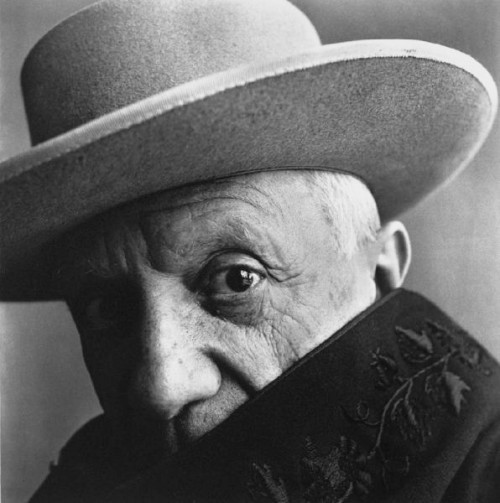
The last two in the Study the Masters series were Yousuf Karsh and Arnold Newman, both of whom I consider sublime portraitists who set a high bar for those of us to follow and learn from. The third logical Master for me is Irving Penn (1917-2009) whose career spanned, but out-lived, the careers of both Karsh and Newman. Like Avedon who came slightly after him, he was a fashion photographer (he worked for Vogue for seven decades), and the two of them become known for the simplicity found shooting against a white backdrop (a fact Amazon.com might do well to remember in light of their recent patent claim, but I digress…)
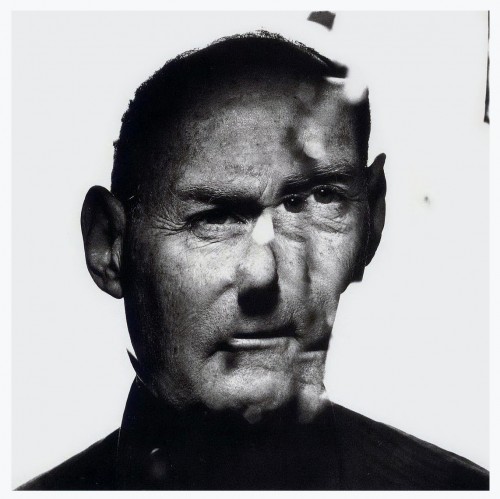
I like the apparent progression of style from Karsh through Newman, to Penn, because it’s an interesting study in 3 masters, living and working at the same time. Where Karsh is much more conservative and careful in his compositions (which I don’t say as a detraction), Newman seemed more relaxed, and Penn seems even more so. Penn also dabbled in still lifes and painting. All three are well worth studying together (for example, they all had sittings with Picasso, looking at those portraits together is interesting.) I’ve got a special place in my heart for Karsh because he was my earliest influence, but I find both Newman and Penn warmer, perhaps a little more human – like the self portrait of Penn, above, a little less polished and a little more vulnerable.
You can find a good selection of Penn’s work online here, and there’s a couple excellent books as well – Small Trades, if you can get it, is excellent. Amazon seems to be able to get you one. Irving Penn, A Career in Photography will probably be the next one I get for my own collection. And his A Notebook at Random is really interesting, though perhaps not for everyone. It’s quirky. But take a few minutes and look through his other work as well. If you like still lifes, his Flowers looks gorgeous.




